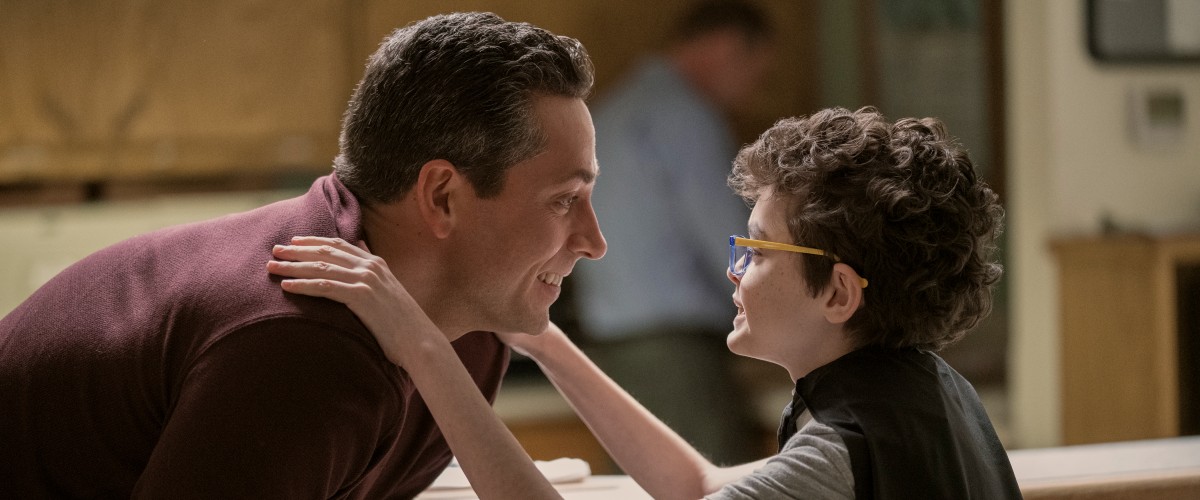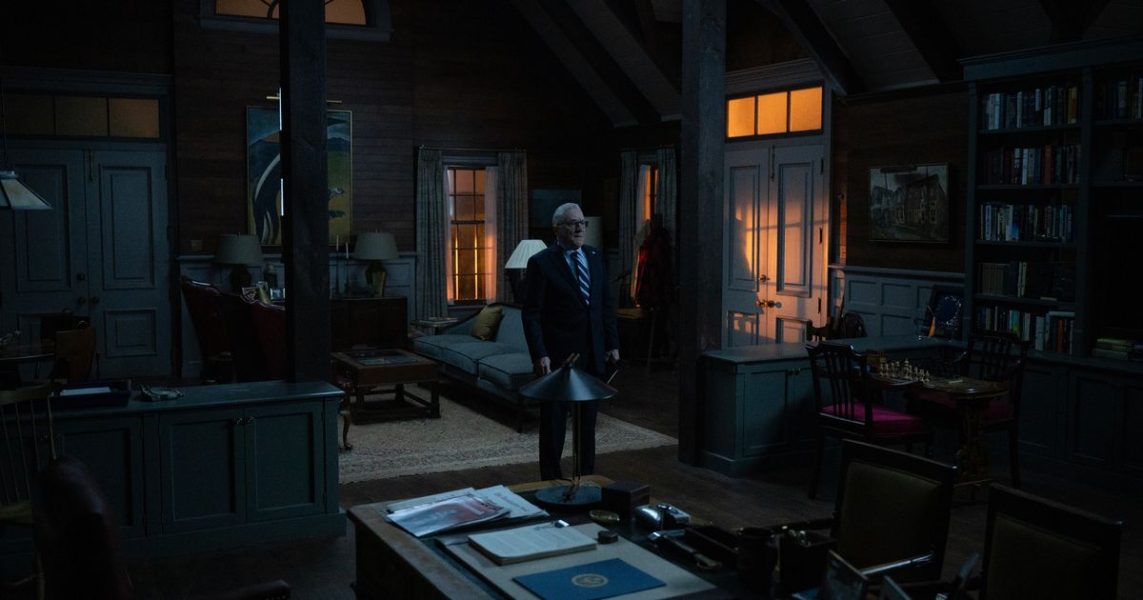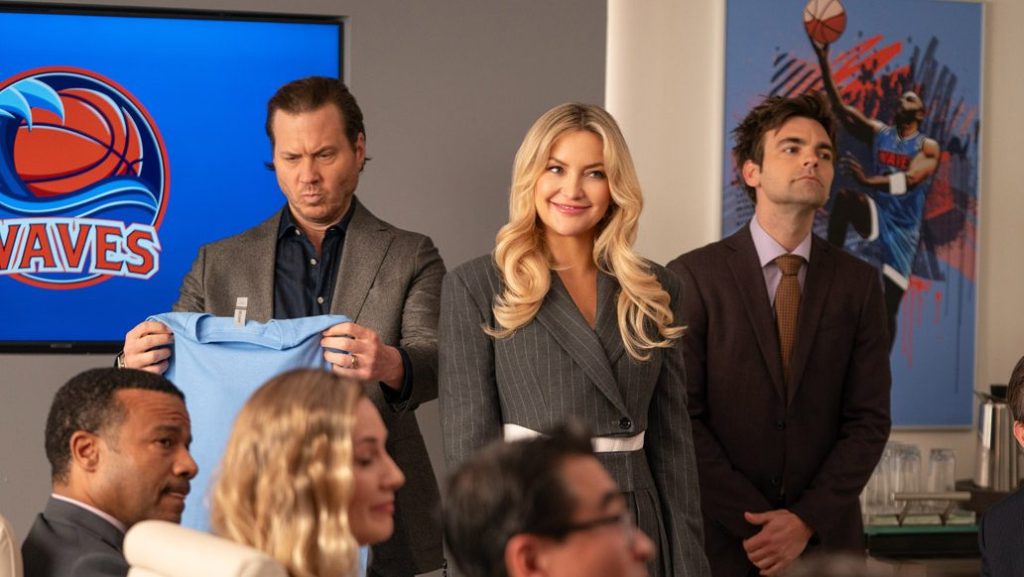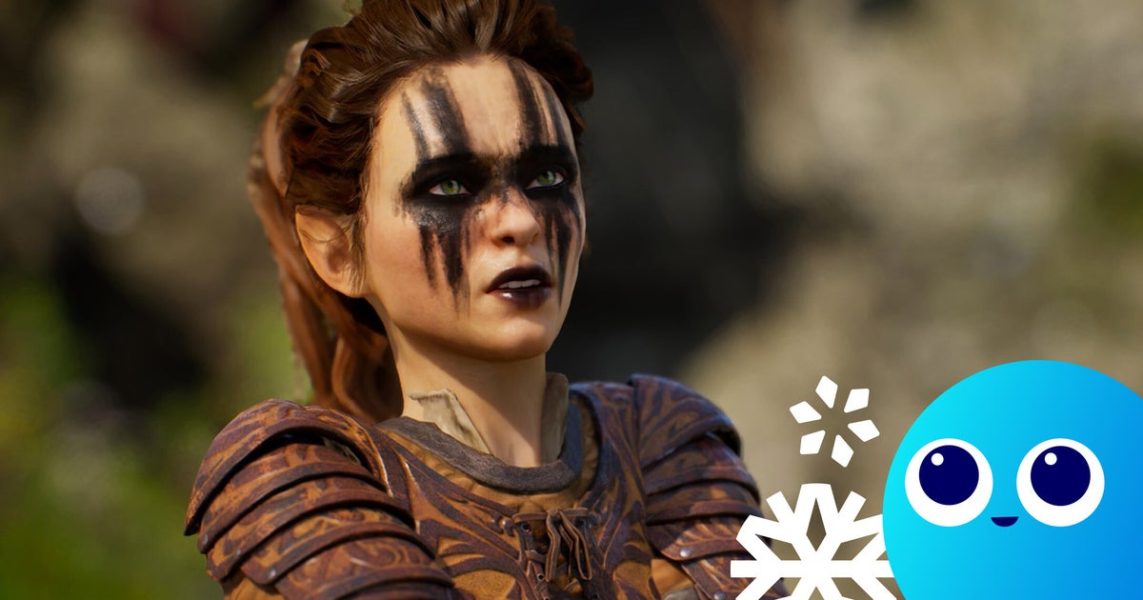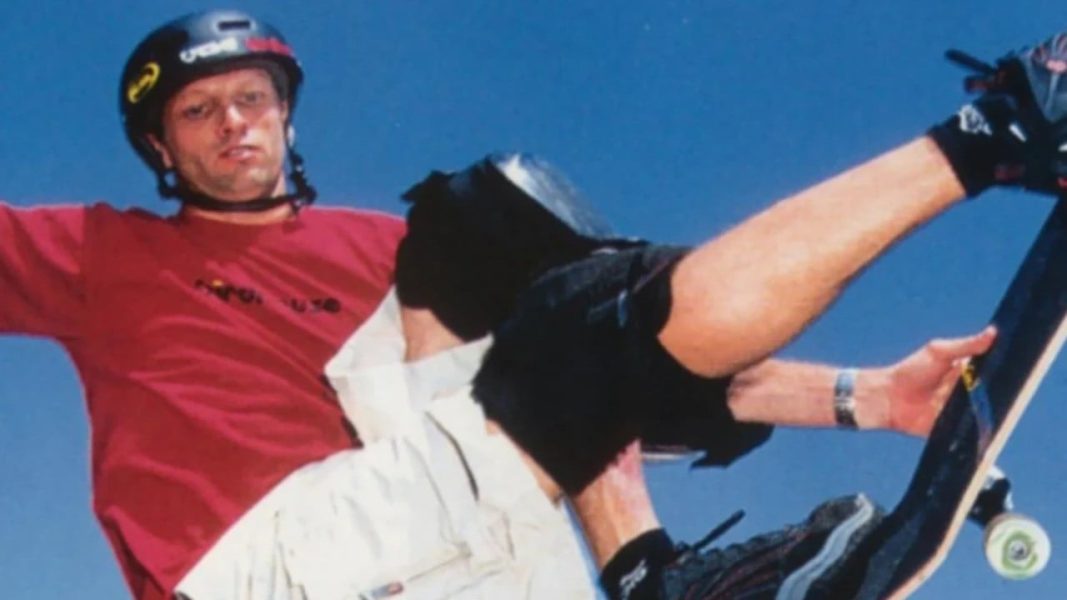‘The Monkey’ Filmmaker Osgood Perkins Says the Studios “Don’t Want to See” Horror-Comedy – Hollywood Reporter
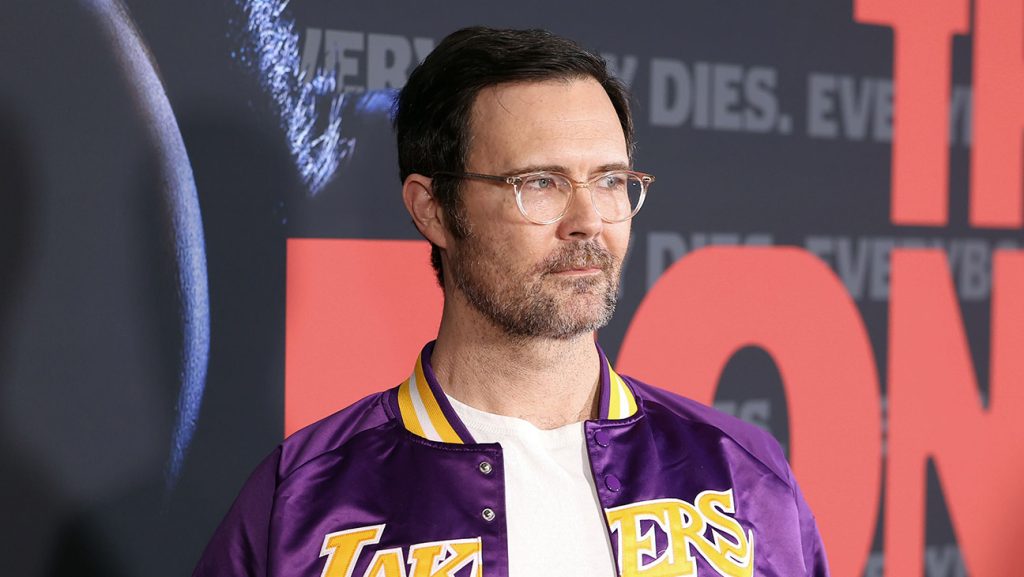
LOS ANGELES, CALIFORNIA - FEBRUARY 13: Osgood Perkins attends the Los Angeles Premiere Of Neon's "The Monkey" at Immanuel Presbyterian Church on February 13, 2025 in Los Angeles, California. (Photo by Leon Bennett/Getty Images)
Subscribe for full access to The Hollywood ReporterSubscribe for full access to The Hollywood ReporterDespite having powerful producers James Wan and Peter Safran aboard the Stephen King adaptation, no major studio wanted Perkins’ take on the project before indie outfit Neon boarded: “I had to take it and run.”
By
Brian Davids
Writer
Last summer, when Osgood “Oz” Perkins’ Longlegs grossed nearly $127 million against a sub-$10 million budget, the writer-director had already wrapped its two follow-ups for Neon. The Monkey, which opens in theaters on Feb. 21, was actually the third film he shot in his recent genre trio that includes the aforementioned Longlegs and October 2025’s Keeper. Producers James Wan (via Atomic Monster) and Peter Safran (via TSC) approached Perkins about adapting Stephen King’s short story about a lethal toy monkey, but the stern tone of the existing script on file was at odds with the filmmaker’s own instincts for such a movie.
Related Stories
Movies
‘The Monkey’ Review: Osgood Perkins’ Energetic but Aggravating Mess of a ‘Longlegs’ Follow-Up
Movies
Neon Takes Maika Monroe’s Horror Pic ‘Brides’
Consequently, Perkins decided to pursue the subgenre of horror-comedy, which tends to be a tough sell within the studio system. That proved to be the case once more when a major studio balked at his tragicomedy take. (One can surmise that The Monkey was originally at WB/New Line given Wan’s previous first-look deal and Safran’s long-running standing there.) Fortunately, Wan and Safran supported Perkins’ vision to such a degree that they freed up the project for an independent path to the big screen.
“For anybody who’s been in the business in a decision-making capacity, the words ‘horror’ and ‘comedy,’ when they’re butted up next to each other, is a really bad thing to read. They don’t want to see that,” Perkins tells The Hollywood Reporter. “But I felt confident about what we had, and there was a moment where ‘they’ weren’t, so I had to take it and run.”
Besides the tone, Perkins knew he needed to tailor the bones of King’s story to his own sensibility, and so the toy monkey became a heightened symbol of life and death, in that you never know when and how the fates are going to call your number. The randomness of death hits close to home with Perkins, as he lost both of his parents, Anthony Perkins and Berry Berenson, in uniquely tragic ways.
“Around [the monkey], these insane unexpected deaths happen, and they seem really impossible and shocking and undeserved,” Perkins says. “That’s been my biography. I’ve suffered a couple of those, some really big ones. That was the storyline with both of my parents.”
Perkins intended to shoot The Monkey after wrapping Longlegs in the spring of 2023, but the WGA and SAG-AFTRA strikes upended that plan. However, having fallen into a productive groove with his Vancouver crew and producing team, he opted to bridge the gap by making another indie horror film with Canadian crew and talent that were, or could become, unencumbered by the labor stoppages. What resulted is known as Keeper.
Tatiana Maslany stars as a wife who, following the abrupt exit of her husband, has to contend with a sinister force at their remote cabin getaway. Maslany loved Perkins’ lean-and-mean shooting experience so much that she immediately signed on to play the mother of The Monkey’s twin main characters, Hal and Bill Shelburn. (Christian Convery and Theo James portray both roles in their respective 1999 and 2024 timelines.)
“We did [Keeper] fast and on the fly. We did it with a lot of trust and good faith. It’s an intimate, small, weird movie with, essentially, two characters,” Perkins shares. “So we wrapped that movie on a Friday, and on the following Monday, we were in the offices of The Monkey.”
Below, during a recent conversation with THR, Perkins also discusses why he felt minimal pressure adapting King, before explaining how Guillermo del Toro’s support has kept him on track during his career ascent since 2020’s Gretel & Hansel.
***
You were already in post on The Monkey when Longlegs became a smash hit, so how has life changed? Is there more commotion in your inbox these days?
Yeah, people ask me if they can have coffee with me, and I say, “I don’t know.” That’s how things change. Someone else knows; I don’t know the answer to that anymore. As far as what I’m going to be doing, it’s just given me tremendous confidence, which is the ultimate coin in the business. In any artistic endeavor, if you have confidence, you can do whatever you want. So my taste has been ratified by a general audience, which is bewildering to me, but there it is. And so I just feel lucky, man. Sometimes, the ball goes in, and sometimes, the ball goes out.
Producers James Wan and Peter Safran approached you about The Monkey mid-Longlegs, and while you tried to move forward at a studio, you ultimately made it independently. Did that studio not grasp the tragic comedy of it all?
The opportunity and the privilege to do The Monkey showed up at a time in my life when I really needed it, and it just clicked really well. But the weird thing about the business is how jittery it is. Everyone is nervous about failure and nervous about success and nervous about taking chances — and it makes sense. It’s a big industry. A lot is at stake. A lot of effort is put into the release of things. A lot of money is spent and a lot of manpower is used up. So I get wanting to hedge your bet. And for anybody who’s been in the business in a decision-making capacity, the words “horror” and “comedy,” when they’re butted up next to each other, is a really bad thing to read. They don’t want to see that. This genre is a really tricky little sublet. But I felt confident about what we had, and there was a moment where “they” weren’t, so I had to take it and run.
Despite being a Stephen King short story, you had to personalize The Monkey, and fans of yours will be able to see your fingerprints all over it. But for the uninitiated, how would you summarize this adaptive process?
When I’m given an assignment to write something — whether that’s by Peter and James, or just by my own muse — something clicks in and becomes a thing I’m going to focus on. So step one is always figuring out how it’s about me. How is this thing true for me? Otherwise, you’re just a screenwriter writing something you think might be cool, or you think someone else might think is cool. And that’s, for me, a very misguided way to approach writing. So I find a way to personalize that. I find the thing that matches my experience and feels worthy of exploration.
In this case, it was just the acknowledgement of the fact that the monkey is sort of an idol. It doesn’t jump on you like M3GAN; it doesn’t hack at you like Chucky. It just is. And around it, these insane unexpected deaths happen, and they seem really impossible and shocking and undeserved. When I got to that place, I just took a beat and was like, “Oh, that’s me.” That’s been my biography. I’ve suffered a couple of those, some really big ones. That was the storyline with both of my parents. So, in that moment, I became an authority, and when you’re faced with the blinking cursor and you’re not an authority, God bless you, right? That’s a bad boat to be on, but if you feel like you’re an expert on the soul of the thing, then everything you do is honest and true.
So the voice of The Monkey — and all of the things that are said and all the philosophies around death — are all the things I think are true. They’re just mouthpieces for me and my experience. So when I connected to that and I realized that, rhythmically, this deep exploration was able to be punctuated by this Itchy and Scratchy, Chuck Jones-level violence, you get the rhythm. You then realize that it’s got a beat.
There’s an interesting catch-22 in this movie. If Hal (Theo James) is present in his son’s life, he puts him at great risk by way of the Shelburn family curse. But by being absent, he’s also inflicting untold harm on him. What’d you make of this particular absent father’s dilemma?
What resonates for me — as a father of three, and for a lot of other people — is that there’s this low simmering dread that we’re going to somehow inadvertently pass on something unsavory to our kids. We don’t mean to do it, but in a slip of the tongue or in a moment of weakness or frustration, you’re going to be critical. And then the critical voice of the father is going to be embedded into your [kids’] head. It happened to me. I have a critical voice in my head, and I would love for my kids not to have that. Thematically, there’s that push and pull of wanting to protect your kids from the world with your own [world]. You’re using yourself as a human shield, but there’s also the acknowledgement that you’ve also got some shrapnel coming off of you. So it’s a fine balance.
Every filmmaker I’ve talked to about their own King adaptation has admitted to breathing a sigh of relief when he gives them his coveted stamp of approval. They’ve all had his response to Stanley Kubrick’s The Shining in the back of their minds. Were you anxious about that before he finally saw The Monkey and raved about it?
I wasn’t anxious about it because I genuinely thought that what I had was good, and that’s not always the case. Writing things can really be a struggle, and then, sometimes, they flow. And this really seemed like such an opportune alignment of prospects, opportunities and sensibilities that I I felt like I had it. So I felt like he was going to respect the fact that I was doing something honest and a little deep, and that I wasn’t trying to do something self-serving or cheap or anything like that. So I actually never felt worried, or that I was under any pressure, just because it felt like it was flowing.
To design the elaborate kills, would you ever begin at the death blow and then work your way backwards to the starting point?
Everyone has their job in the world. Some people’s job is to drill teeth, some people’s job is to press the button on the missile, and some people’s job is to make stuff up out of nothing. And that’s my job. So I tried to assign myself certain limitations, because, when you limit yourself, you force yourself to focus and come up with the best stuff. The rule of thumb was that none of these deaths can actually happen in the [real] world. Swimming pool water and electricity don’t result in the thing that happens. You can’t sever a spinal column with a hibachi knife. There’s no actual threat of death in this movie. It’s meant to have that Wile E. Coyote quality. He gets burned to a crisp every five minutes, but that’s not really how the world is. So as long as I stayed in that cartoon nature, I knew what the tone was going to be and what the flavor was going to be. I then just went for whatever came to me, and there’s no magic button. You just sit down every day and hope that it comes.
James Wan is an accomplished filmmaker in his own right, so did that lead to more specific notes than those of a typical producer? Or did he leave you alone unlike most producers?
James left me alone entirely, and recently, in the last couple of days, we had an opportunity to talk about the finished product. He’s been so wonderfully deferential to what I did, and he just admired the take that we had and the strength of the execution. It’s a trippy thing to now be in this place where my peers are the greats, and they’re signing off on what I’m doing. It’s a great feeling. So I had nothing but support from all the producers on this from the beginning, which was especially encouraging. These are really successful guys who have made very accessible movies, and to their credit, they have really pleased so many big audiences. So the fact that they endorsed this weird wrinkle in the genre was really encouraging and really lovely.
I’ve heard a million stories about how generous Guillermo del Toro is when it comes to offering notes on early cuts and whatnot. Did he provide some invaluable feedback here?
Guillermo is a friend who I call for the occasional pep talk, when things seem a bit murky and especially when I start to feel the creep of self-congratulation. It’s when I start to feel like, “Hey, I’m doing really great and the critics love it. This is going really well and I’m succeeding. Oh, Jesus Christ, I better call Guillermo, so Guillermo can pop that balloon.” When you start to believe your own shit, that’s when stuff starts to slip. So it was useful for me when Guillermo said, “If everything gets fucked up and you fail, it’s all fine. It’s when you succeed that I start to worry.” So that’s just a beautiful way of keeping you honest and humble, which is the only place you can really operate from in this business anyway.
To follow-up on Longlegs, Alicia Witt told me about the hypodermic needle that was established in the infamous “bits box.” Apparently, her character, Ruth, used it on Maika Monroe’s character, Lee, in order to put her to sleep toward the end. It was supposed to allow her the opportunity to go and finish the devil’s business. Did you cut that particular moment in order to further bolster the connection between the dolls and their recipients?
You hear about this all the time; people are always talking about it. There’s the script, there’s the shoot, and there’s the edit. And every time you move from one to the next, you’re, in essence, shitcanning the previous stage. We shot so much footage around that moment when Ruth is standing with the shotgun trained on Lee’s doll. We shot pages and pages and hours and hours of dialogue and explanation, and we just ended up getting to it quicker in a much more elegant way and turning it into that storytime. Ruth thinks back on the mythology that she’d built around Lee’s childhood and Longlegs’ visit and the pact with the devil that she made. So a lot of stuff just dropped out of the bottom of all of it, and yeah, the idea became focused. It became clearer that the ball in the doll’s head was what was manipulating Lee, and once that thing was obliterated, she was freed.
You have another movie with Tatiana Maslany in the can. Are you just making hay while the sun is still shining? Is that why you’ve kept your foot on the gas?
I went to Vancouver to make Longlegs, and I hadn’t made a movie in a long time. I then fell in love with the Canadian crew and my Vancouver producer, Chris Ferguson, during the adventure of making Longlegs. We’ve formed this amazing kind of mini-Hollywood up there, and we felt good about what we were doing. So we were ready to get started on The Monkey after freeing it up from the studio, and we’d got the financing. We had everybody and the crew was equally committed and wanted to keep the party going, but then the strikes set into their long haul. There was that moment there where the Writers Guild strike seemed like it was never going to end and the world was going to crack. So I called Chris and was like, “Well, we’ve got to keep working, man. The dream was to just go from one movie to the next, so we’ve got to figure something out.”
The shortest version of the story is that we found a Canadian writer who could do it, who wasn’t a Writers Guild writer [Nick Lepard]. We then found Canadian actors who would wave their SAG status and work as Canadians. So we formed this movie called Keeper out of nothing, and we just kept working. We did it fast and on the fly. We did it with a lot of trust and good faith. It’s an intimate, small, weird movie with, essentially, two characters. So we wrapped that movie on a Friday, and on the following Monday, we were in the offices of The Monkey. That’s just the way it went. We had a rhythm, and we just loved each other. So, if you find that and you’re capable and willing and not exhausted beyond your limit, then why not keep going?
Are you worn out from working like there’s no tomorrow?
At this point, I’m pretty exhausted, but I have three good movies, so that’s fine.
***The Monkey opens in theaters on Feb. 21. Sign up for THR news straight to your inbox every dayGet the scoops first! Breaking news and interviews on comics, sci-fi, horror and moreSubscribe for full access to The Hollywood ReporterSend us a tip using our anonymous form.
